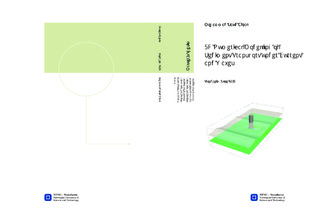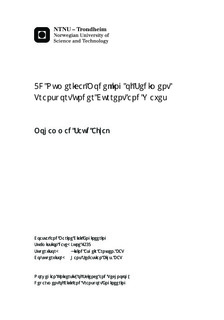| dc.description.abstract | The sediment transport module of REEF3D is used to calculate the scour and the deposition pattern for abutment, pier and contraction under constant discharge and for pier under waves. The time development of scour for all these cases is also observed. To this effect, the Reynolds Averaged Navier Stokes (RANS) equations are solved in all three dimensions, making it fully three dimensional. The location of the free surface is represented using level set method. The eddy viscosity in the RANS equation is determined by the use of the two-equation k-ω model and k-ε model. Using the conservative finite-difference framework on a structured-staggered grid, convective terms of RANS equation is discretized with the fifth-order WENO scheme. The pressure gradient term in the RANS equation is modelled using Chorin ́s projection method on a staggered grid. For implementation of waves, the CFD code is used as a numerical wave tank. For the representation of the moveable sediment bed, the level set method is used. Kovacs and Parker and Dey formulations of bed shear stress reduction due to the sloping bed is implemented along with the sand slide algorithm to take care of erosion of individual bed cells.In the first case, the numerical model results are validated against the experimental findings of the abutment scour study done at Politecnico di Milano, Dept. I.I.A.R., Milan, Italy.. This test case is used as a benchmark for validation of sediment transport module of REEF3D. The effect on numerical results upon variation of grid size, turbulence model, time discretization scheme, formulations of critical shear stress for sloping bed and porosity was observed and compared against the experimental results. In the second configuration, the numerical model is used to predict the scour pattern around a pier. The scour pattern around the pier is compared against the numerical result of the hydraulic laboratory of the Technical University Darmstadt. The performance of turbulence model and formulations of critical shear stress for sloping bed was observed. The numerical model is then tested for predicting a general contraction scour. The result is compared against the physical experiments of the contraction case conducted at the laboratories of the BAW (Federal Waterways Engineering and Research Institute), Karlsruhe, Germany. For the above mentioned three cases, a constant discharge at the boundary is used. The numerical model in above configurations predict the general evolution (geometry, location and maximum scour depth) and time development of the scour hole accurately.In the final configuration, 3D local scour around a vertical pile under waves is modelled using sediment transport module of REEF3D. The numerical result is first compared to the theoretical observations and then validated against the pier scour experiments conducted in the Department of Hydrodynamics and Water Resources (ISVA), Technical University of Denmark by Sumer and Fredsoe. The effect of variation of the sediment time stepping with the decoupling of the hydrodynamic and the morphodynamic time step is tested. The numerical model shows good agreement with the experiment and theoretical erosion and deposition pattern. The de-coupled approach for simulation of hydrodynamic and sediment transport processes is found to be a reasonable assumption. | nb_NO |

